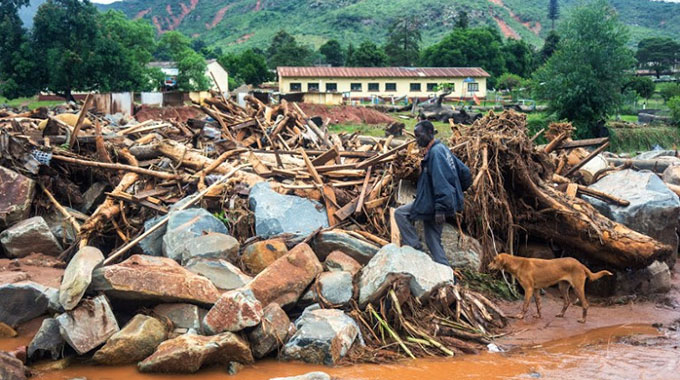
The ManicaPost

OVER the past 50 years, climate-related natural disasters – some of them deadly – have become a regular occurrence as increasingly extreme weather changes are triggering a surge in catastrophes and worsening the risk of damages.
The vagaries of the global climate have resulted in the exacerbation of hazards and are intensifying the risk of dangerous weather-induced disasters.
Scientists expect that the frequency of disasters caused by heat waves, tropical cyclones and wildfires will likely increase considerably and be more intense in the coming years.
As such, in the recent past years Zimbabwe has not been spared from these phenomena as veld fires and tropical storms have ravaged the country, raising concern on the need to do more in terms of emergency management.
Manicaland has also borne the brunt of natural and man-made disasters like tropical storms, veld fires and flash floods, with the notable most recent one being the Cyclone Idai that hit parts of Chimanimani and Chipinge districts in 2019.
Coupled with climate change, increasing population growth, environmental degradation as well as rapid and unplanned settlements have also contributed towards exposing people and property to disasters.
This calls for effective mechanisms and efficient strategies in disaster preparedness and risk reduction.
Disaster preparedness comprises measures employed in advance by governments, organisations, communities and individuals to equip themselves in readiness to respond better to catastrophes as well as cope in the immediate aftermath.
The overall objective is to reduce the loss of human lives, damage to property and erosion of livelihoods while playing a critical role in mitigating the adverse effects.
Ultimately, this plays a crucial role in building the resilience of communities.
Just this past week, an advisory warning of heavy rains with potential to cause major damages in some parts of the country was jointly issued by the Meteorological Services Department and Department of Civil Protection, resulting in the mobilisation of District Civil Protection Committees countrywide.
Such safety precautions to prepare for and mitigate hazards are what prompted Government to enact the Civil Protection Act as its national disaster legislation and create institutions like the Department of Civil Protection charged with the coordination and management of responses to disasters.
To that end, disaster risk reduction and climate change adaption strategies are key in local developing planning.
Elsewhere in this issue, we carry a story in which the provincial Civil Protection Unit chairperson, Mr Edgars Seenza highlights the shortages of evacuation centres in Manicaland.
Yet simple initiatives like training for search and rescue, establishing early warning systems, developing contingency plans as well as stockpiling of supplies and equipment can go a long way in mitigating the social, economic and health repercussions of disasters by saving lives while strengthening communities’ ability and capacity to respond.
We cannot afford to be ill-equipped as this will have catastrophic consequences.
Understanding the occurrence, frequency, risks, vulnerabilities and potential impact on people, infrastructure and property is important in improving preparedness for disasters.
Experts put it that preparedness efforts range from individual level activities (such as first aid training) to household actions (like stockpiling supplies) and government strategies (including early warning systems, contingency plans, evacuation routes and public information routes).
Especially for the latter, this is where community radio stations become particularly useful and helpful as they play a massively crucial role in disseminating important and relevant information.
Therefore, the ongoing establishment of community radio stations across the country the feeds into this narrative.
This, Information, Publicity and Broadcasting Services Minister – Senator Monica Mutsvangwa – said during the commissioning of Nyangani FM last year, is at the centre of Government’s efforts to raise awareness on improving disaster preparedness and responsiveness.
It all comes in the wake of lessons learnt following events that occurred during the disastrous Cyclone Idai, Minister Mutsvangwa added. In that regard, Chimanimani and Nyanga, which are both prone to disasters, already have functional community radio stations – Chimanimani FM and Nyangani FM respectively.
It is also imperative to support preparedness and response planning to disasters basing on scientific and technical information as the Meteorological Services Department and Department of Civil Protection have been studiously doing.
Prevention, preparedness, mitigation, response and recovery are five key components of emergency management during disasters.
It is crucial to step up efforts in this regard as a stitch in time saves nine.



